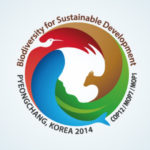Crossroads on Earth
In June 2012, world leaders, along with thousands of participants from various groups including governments, the private sector and civil society, came together at the infamous Rio+20 conference to shape a new road towards reducing poverty, advancing social equity and ensuring environmental protection. Built around the three pillars of sustainable development the talks kick-started the process of replacing the Millennium Development Goals.
In an effort to make the process of designing replacements for the MDGs – likely to be called the Sustainable Development Goals (SDGs) – the United Nations launched the My World survey in December 2012. A global online survey, My World aims to capture people’s “priorities for a better world”(1) . The site says
“… the results will be shared with world leaders in setting the next global development agenda.” – My World Survey Website
Citizens from around the world are asked to choose their top six priorities out of sixteen issues that would make the most difference to their lives and future. As of Wednesday the 13th of January 2014, a total number of 1,322,776 global citizens had participated in the MY World global survey from 194 countries.

Based on over 1.3 million votes (of which over 50% are youth (16-30 y.o.)), the top three priorities identified by people are “a good education”, “better healthcare” and “better job opportunities”. At the bottom of the list is “reliable energy at home”, “phone and internet access” and “action taken on climate change”(2) . These votes bring together voters from all countries, genders, education levels and age groups.

Priorities of World Citizens based on 1,322,776 votes from all countries/all genders/all education levels/all age groups
What do these results mean?
First of all, there needs to be some perspective when looking at these results. Asking people to choose (an arbitrary) 6 priorities in their lives doesn’t always give a clear picture of how strong those priorities are. What if, for example, someone feels really strongly that “an honest and responsive government” is their top priority, but that the other five options they tick are much less of a priority in their lives? Without a ranking system that asks people to respond to all of the options, we can’t really tell if action on climate change really falls at the bottom of people’s priorities, or always just outside their top 6.
Questions also arise surrounding the reason as to why has climate change been ranked as a low priority not just by youth but by voters across all ages, genders and countries, particularly those between high and low HDI ranked countries. It could be argued that a lack of awareness exists about the benefits of action on climate change, particularly when it comes to the interlinking of climate change with other issues on the My World list. The results of thoughts that dive into interlinking climate change to all aspects will naturally conclude that action on climate change should be the base of the pyramid of sustainable development
The simplest of examples constantly used is that of food security, with climatic changes resulting in temperature rise and increasing water scarcity hence, resulting in droughts and destroying agricultural yield. This in turn threatens the economic and social aspects of those countries dependent on this sector. Food and water are directly related to health and so the loop of inter-linkages and cross cutting issues begins. As Mary Robinson said this week
“Impossible to achieve sustainable development without addressing climate change.”
– Mary Robinson
Even without a more nuanced view of the results, the relegation of action on climate change to the bottom of the list doesn’t mean that climate change won’t be part of the Post-2015 agenda. Climate change is listed as a top priority by the UN Secretary General Ban Ki-moon who noted that
“climate change is the single greatest threat to sustainable development”
– Ban Ki-moon
in a speech made in 2013. He further stated that ‘addressing climate change is one of our greatest opportunities, as with enlightened actions we can produce jobs, improve public health and protect the environment’.
What is more, even if climate change were to be omitted from the sustainable development agenda, action and progress is still possible through the dedicated UN climate negotiations, the UNFCCC.
Whether governments actually incorporate action on climate change into their national policies is questionable, however. This has been highlighted by various countries who stated that individual countries must be given autonomy as each has its own agenda for development, many of which do not see climate change as a top priority or is unable to implement change for various reasons whether it be lack of financial capability, lack of required technologies, other priorities such as poverty or even due to conflict and instability in addition to others.
If you haven’t voted for your future and your top priorities, you can do so through the MY World website.
(1) My World Survey
(2) All the results can be seen here.
This article was originally posted on January 17, 2014 by youthpolicy.org: http://www.youthpolicy.org/blog/participation-global-governance/crossroad-on-earth/
 Next Post
Next Post